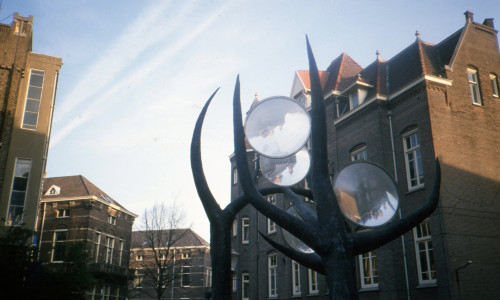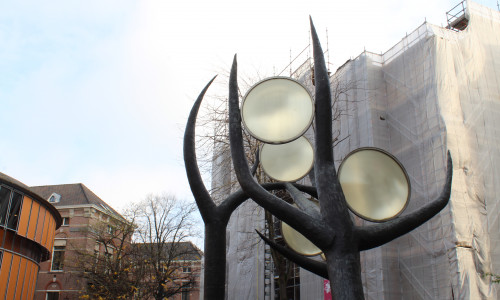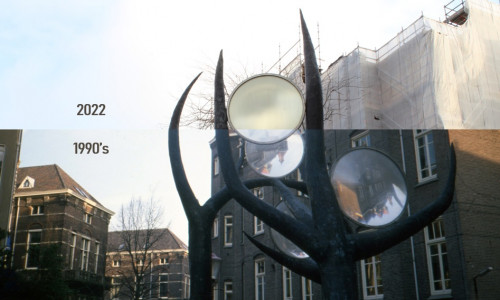

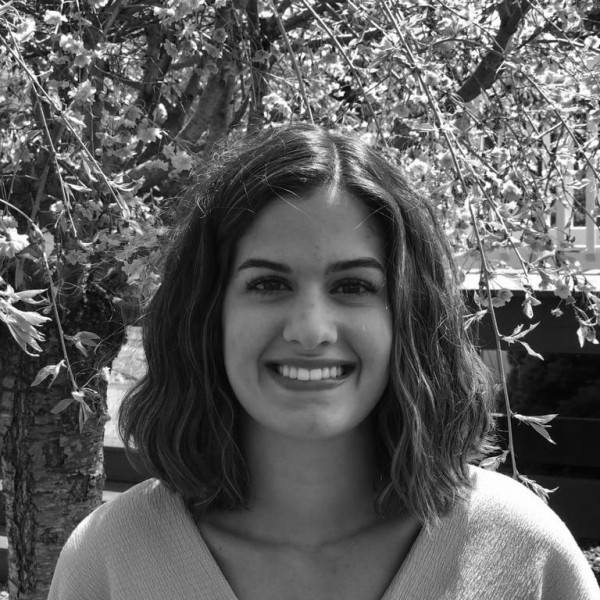
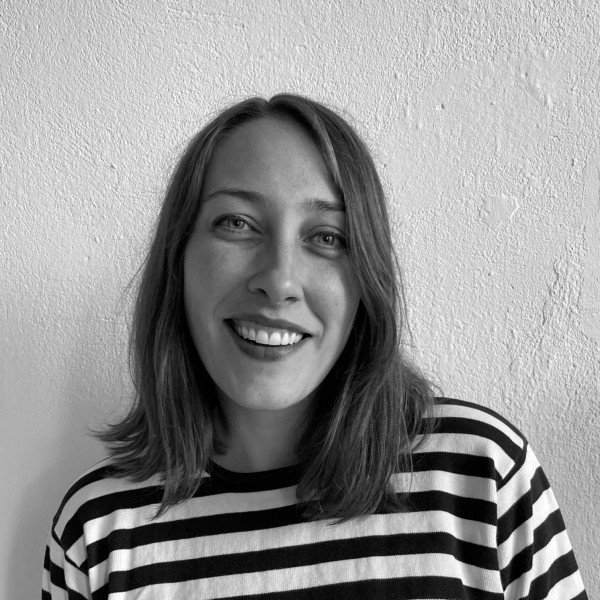
-[cropped].jpg)

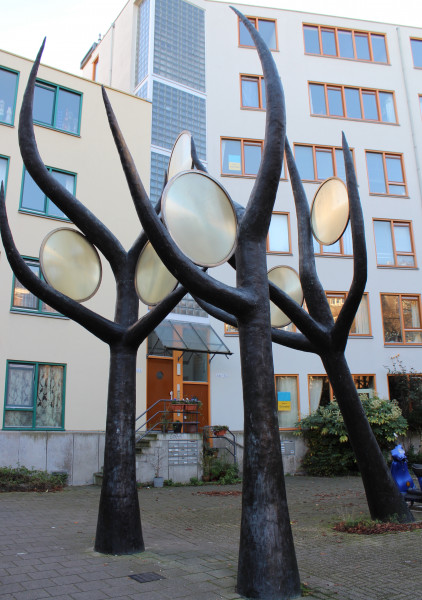 Erected in 1989, Thom Puckey's The Lens Trees have been a much-adored staple of the University Quarter visual landscape for decades. The playful and interactive fresnel lenses, which – the artist characterizes - are the focal point of the artwork, have become yellowed and opaque over time and the patinated bronze “trunks” have lost their original luster. Restoring these vital aesthetic and functional aspects of the artwork, in turn, restore the public engagement with the artwork, and the space it engenders for the community in the University Quarter.
Erected in 1989, Thom Puckey's The Lens Trees have been a much-adored staple of the University Quarter visual landscape for decades. The playful and interactive fresnel lenses, which – the artist characterizes - are the focal point of the artwork, have become yellowed and opaque over time and the patinated bronze “trunks” have lost their original luster. Restoring these vital aesthetic and functional aspects of the artwork, in turn, restore the public engagement with the artwork, and the space it engenders for the community in the University Quarter.
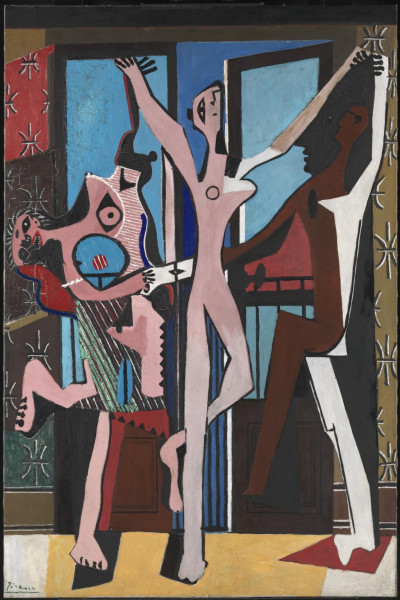 The Lens Trees is located in the University Quarter at an intersection of bike and pedestrian traffic. It was this location that inspired Puckey to create a sculpture that interacts with its surroundings by way of including it in these traffic routes. Cyclists are confronted with ist impressive stature as they cycle down Vendelstraat and pedestrians can stroll underneath its sprawling branches while going about their daily lives. At the time of its commission, lenses were a prominent component in Puckey`s gallery work and naturally made their way into the sculpture. The Fresnel lenses additionally reference Spinoza's lens-grinding workshop in the area and allude to telescopes absorbing the surroundings and playfully turning them on their head.
The Lens Trees is located in the University Quarter at an intersection of bike and pedestrian traffic. It was this location that inspired Puckey to create a sculpture that interacts with its surroundings by way of including it in these traffic routes. Cyclists are confronted with ist impressive stature as they cycle down Vendelstraat and pedestrians can stroll underneath its sprawling branches while going about their daily lives. At the time of its commission, lenses were a prominent component in Puckey`s gallery work and naturally made their way into the sculpture. The Fresnel lenses additionally reference Spinoza's lens-grinding workshop in the area and allude to telescopes absorbing the surroundings and playfully turning them on their head.
